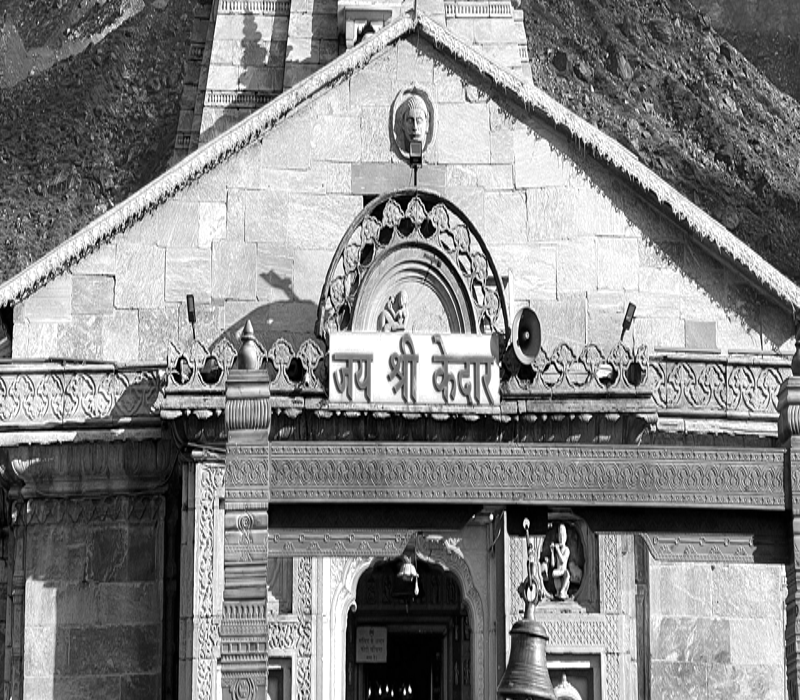- Offices: Dehradun | Dwarka New Delhi
Har Ki Pauri, Haridwar: Where Divine Ganges Embraces Devotees in a Timeless Union - Haridwar, one of the holiest cities in India, is a tapestry woven with spirituality, culture, and the ceaseless flow of the sacred Ganges River. At the heart of this city's spiritual fervor lies Har Ki Pauri, a revered ghat that epitomizes the confluence of faith and devotion. This iconic landmark, steeped in history and tradition, holds a profound significance that draws pilgrims and travelers from across the globe. As the Ganges embraces the ghats in a timeless union, so does Har Ki Pauri embrace the hearts of those who seek solace, blessings, and a connection to the divine.
Har Ki Pauri: The Steps to the Divine
"Har Ki Pauri" translates to "Steps of Lord Shiva," and true to its name, it's a place where the spiritual journey of countless devotees begins or culminates. This revered ghat is a bustling arena of faith, rituals, and the unbroken flow of devotion. The history of Har Ki Pauri dates back to ancient times, with legends that speak of Lord Shiva and Lord Vishnu visiting this very spot. It's believed that a footprint of Lord Vishnu, imprinted on a stone, exists here—a footprint that embodies the presence of the divine.
The centerpiece of Har Ki Pauri is the sacred Ghat, where devotees gather to perform various rituals, offer prayers, and take a dip in the purifying waters of the Ganges. As the sun rises or sets, the ghats come alive with the chanting of hymns, the lighting of lamps, and the mesmerizing sight of the Ganga Aarti—a sublime ritual that pays homage to the river as a goddess.
The Ganga Aarti: A Symphony of Devotion
The Ganga Aarti at Har Ki Pauri is a symphony of devotion that captivates the heart and soul. Every evening, as the sun sets and darkness descends, the Ghat transforms into an ethereal realm illuminated by the glow of countless lamps. Priests, draped in saffron robes, perform intricate rituals that involve lamps, conch shells, incense, and flowers. The rhythmic movements of the priests, accompanied by soul-stirring chants and melodies, create an atmosphere that transcends the mundane and transports attendees to a realm of spiritual ecstasy.
The Ganga Aarti is more than a ritual; it's a collective expression of reverence for the Ganges, which is seen as a goddess and a source of purity, salvation, and liberation. Devotees light lamps and release them into the river, symbolizing the offering of their sins, worries, and desires to the divine waters. As the lamps float downstream, they carry with them the hopes and prayers of those who stand witness to this poignant spectacle.
Spiritual Significance and Pilgrim's Journey
Har Ki Pauri holds immense significance in Hindu mythology and is a pivotal site for several festivals, including the Kumbh Mela, a grand congregation that draws millions of devotees seeking spiritual enlightenment and purification. Pilgrims from all walks of life visit Har Ki Pauri to take a holy dip in the Ganges, believing that this act cleanses them of their sins and paves the way for spiritual advancement.
The ghat also hosts ceremonies to pay homage to departed souls, wherein ashes are immersed in the Ganges with prayers for their liberation. These rituals underscore the cyclical nature of life and death and the belief in the eternal cycle of rebirth.
Har Ki Pauri and Beyond: Nearby Attractions
While Har Ki Pauri holds its own as a spiritual epicenter, the allure of Haridwar extends to nearby attractions that enrich the experience:
Mansa Devi Temple: Perched atop a hill, the Mansa Devi Temple offers panoramic views of Haridwar. Devotees can either hike to the temple or take the cable car for a scenic journey.
Chandi Devi Temple: This temple, dedicated to Goddess Chandi, is accessible via a cable car ride and offers breathtaking vistas of Haridwar and the Ganges.
Daksha Mahadev Temple: This ancient temple is believed to be the site where the father of Goddess Sati performed a yagna. The temple's architecture and spiritual aura make it a place of reverence.
Maya Devi Temple: The Maya Devi Temple is one of the Siddhapeethas, revered as places where body parts of Goddess Sati fell. The temple holds historical and spiritual significance.
Haridwar Wildlife Sanctuary: For nature enthusiasts, the Haridwar Wildlife Sanctuary offers a chance to explore the diverse flora and fauna of the region.
Embracing the Har Ki Pauri Experience
When visiting Har Ki Pauri, it's essential to approach the experience with respect, reverence, and an open heart. Here are some practical tips to enhance your visit:
Arrive Early: If you wish to witness the Ganga Aarti, arrive well in advance to secure a good spot. The aarti usually takes place around sunset.
Modest Attire: Dress modestly and respectfully, covering your shoulders and legs as a mark of reverence.
Footwear: Remove your footwear before entering the ghat area. There are designated areas for shoe storage.
Participation: You're welcome to join in the rituals and immerse yourself in the spiritual ambiance. Be mindful of your actions and follow the guidance of priests and locals.
Photography: While photography is usually allowed during regular hours, exercise discretion and respect during the Ganga Aarti.
In Conclusion
Har Ki Pauri in Haridwar is a sanctum where the spiritual and the material world intersect—a place where the devotion of millions, the history of centuries, and the eternal flow of the Ganges converge. It's a destination that transcends religious boundaries, inviting all who seek solace, blessings, and a connection with the divine to partake in its embrace. As the Ganges continues its ceaseless journey, so does Har Ki Pauri continue to be a testament to the timeless union between the sacred and the devoted—a haven where pilgrims and travelers find not only the waters of the Ganges but also the waters of their own spirituality, washing away impurities and awakening a sense of transcendence.

